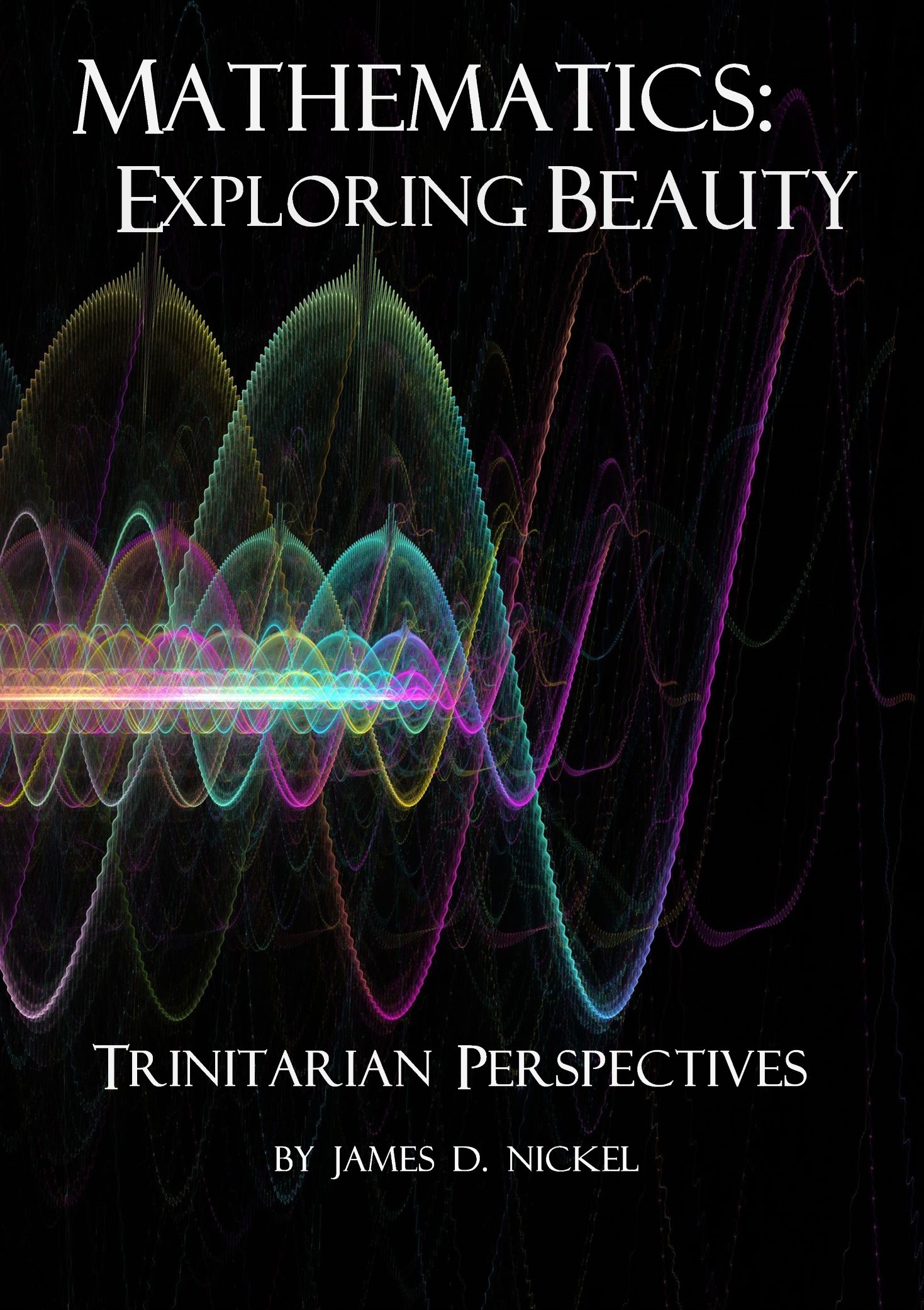



Released 29 August 2024, Mathematics: Exploring Beauty is a 428-page book that explores the nature of beauty as it relates to mathematics in all its facets.
When you pick up this book, you will first feel its weight. Its weight carries the glory of its beauty, the physical beauty of its cover, and its interior design. Beauty also governs the prose - its theological and mathematical exposition - and the color of its interspersed art, graphics, and photographs.
This book is a must-read for anyone interested in the intersection of beauty and life, especially in education reform. It reinvigorates the view of mathematics and physics education in the liberal arts tradition from the dynamic ground of the life-transforming Trinitarian vision.
The eleven chapters investigate beauty, its ultimate source and revelation in the world of mathematics. The text includes color illustrations and pictures, bibliography, and indexes.
Chapter I: Ground of Learning
Chapter II: Introduction
Chapter III: The Beauty of the Creator
Chapter IV: The Beauty of Created Reality
Chapter V: Number and Word
Chapter VI: Beauty and Mathematics: Perichoretic Patterns
Chapter VII: Newton to Einstein
Chapter VIII: Rainbow Beauty
Chapter IX: Kurt Gödel: Using Logic Against Itself
Chapter X: Conclusion
Chapter XI: So what?
We begin with a discussion of Western Education and its neglect of the component of beauty, especially in relationship to mathematics and physics.
We next explore the thesis that the ultimate ground of beauty is the interpenetrating personal nature of the Triune God, Father, Son, and Holy Spirit, the mutual indwelling of self-giving glory of one to another, i.e., the beauty of perichoresis. It is the beauty of this God, the beauty of inter-Trinitarian relationships, that forms the proper understanding of the rationality of the universe, both macro and micro, a rationality of proximate perichoretic beauty.
The historical development of mathematics exposes its deep and interactive relationship to the universe, i.e., how it works in marvelous coordination. Mathematics forms a bridge from the reality of an objective universe to the mind of human beings. Both the physical universe and the human mind have been created and are currently sustained out from the unimaginable wonder and beauty of the Triune Creator.
The heart of the book is an exploration of the multi-faceted wonders of mathematics, of its perichoretic interconnections both within its internal structure and as revelatory of physical realities. It is in these connections that we discern mathematical beauty. Some wonders that we put under a microscope are the basic operations of arithmetic, geometric forms and formulae, the Fibonacci Sequence, functional analysis and the nature of limits in both Differential and Integral Calculus, Pythagorean musical ratios, the Pythagorean Theorem, the Prime Number Theorem, the wonders of Kepler's Three Laws of Planetary motion, Newton's Inverse-Square Law, Gravitation and the Moon, Differential equations and the calculation of Escape Velocity, and Leonhard Euler's Crown Jewel of mathematics.
In the next section, we investigate the beauty of perichoretic revelations in James Clerk Maxwell's four equations that govern the astonishing nature of electromagnetism. It shows how Albert Einstein adopted Maxwell's understanding of electromagnetic fields into his view of the universe writ large, i.e., the space-time continuum unfolded by his Special and General Theories of Relativity, thus dethroning Newton's mechanical view of the universe by replacing it with a dynamic relational view.
Einstein's establishment of the constancy of the velocity of light stimulated the burgeoning development of the understanding of the Quantum mechanical world, of the beauty of its revelation of the strange world of the micro-cosmos. The nature of light in this context draws the book into the exploration of the mathematical physics of the rainbow, a physical phenomenon that acts not only as the delight of beauty to the physical eyes but also as intellectual beauty par excellence to the mind of the mathematician.
The next chapter discusses the nature of Kurt Gödel's incompleteness theorems (1931), i.e., how he used logic to dethrone logic as the end all and be all of mathematical completeness and consistency. It is through Gödel's work that we come to understand why mathematics works, even though we cannot establish its veracity by reason alone. Mathematics works because its structure and interconnectivity are grounded in the ultimate logic of the universe, the quintessential truth that is the onto-relational Creator and Sustainer of all things.
The final two chapters offer a plea for reform not only in mathematical education, but in the way we view all of life. The call of the book is for transformation of the way we look at life, a transformation possible only by embracing and participating in the Trinitarian vision.
The author page is here.
Order Mathematics: Exploring Beauty (428 pages - color graphics/photographs in text).